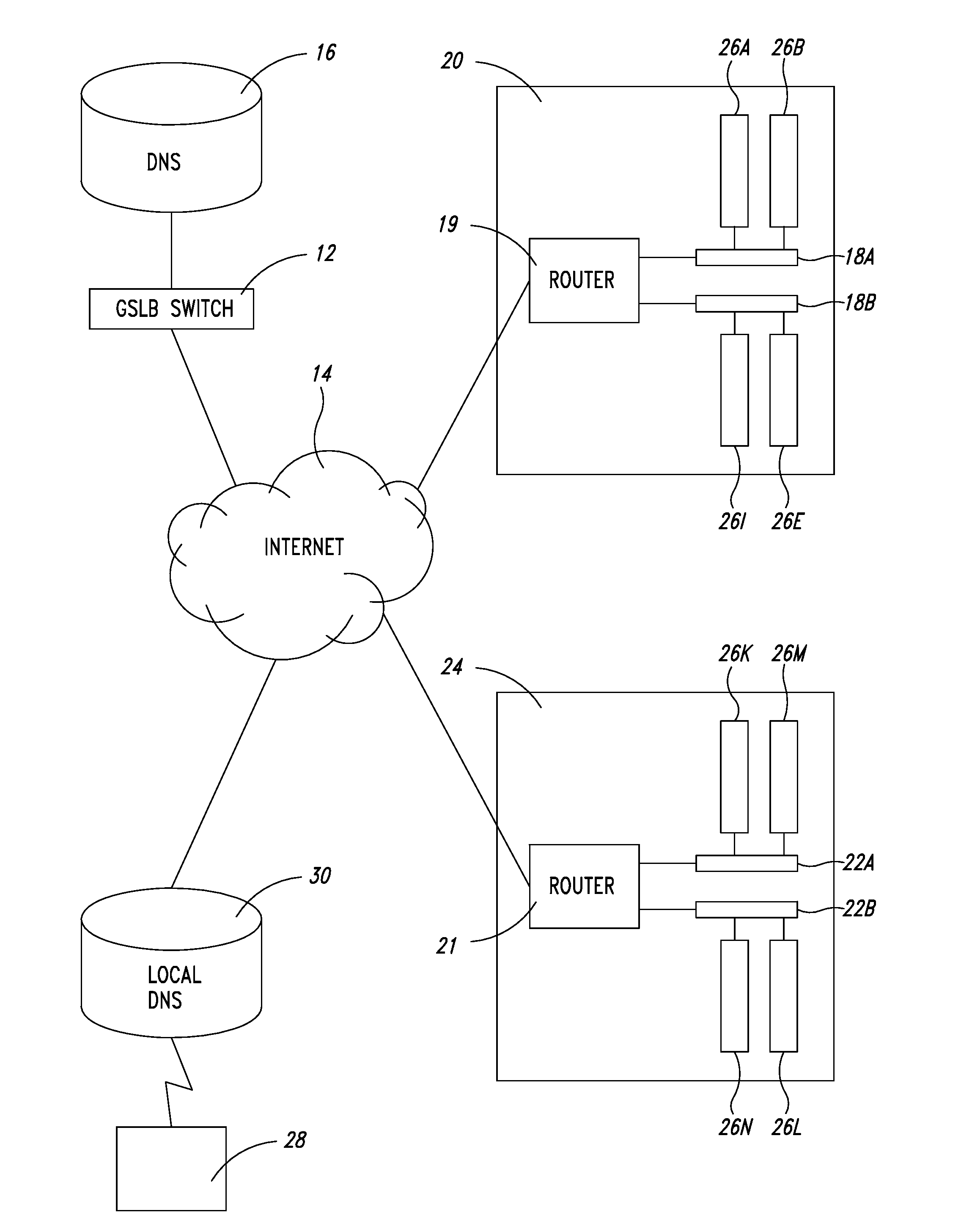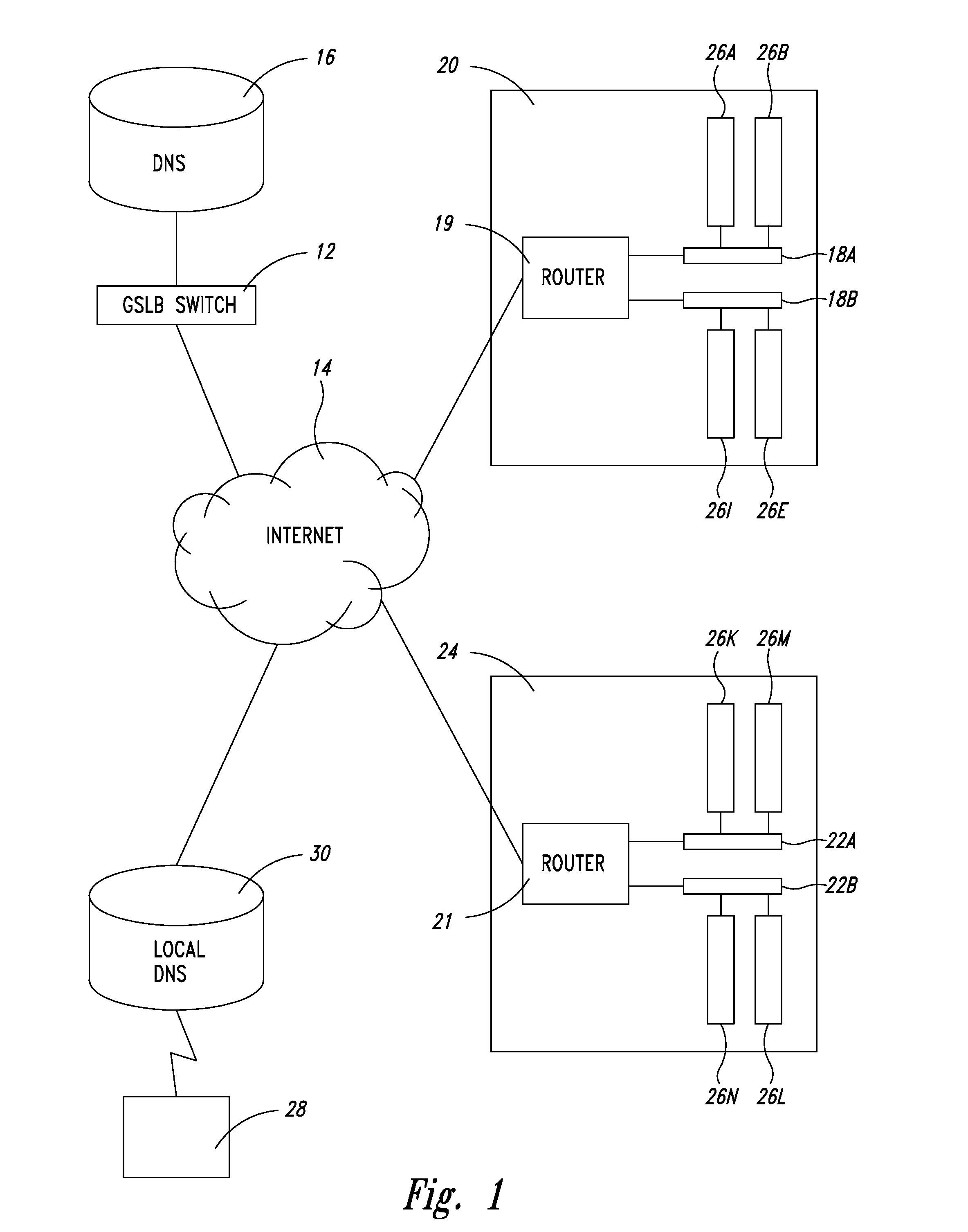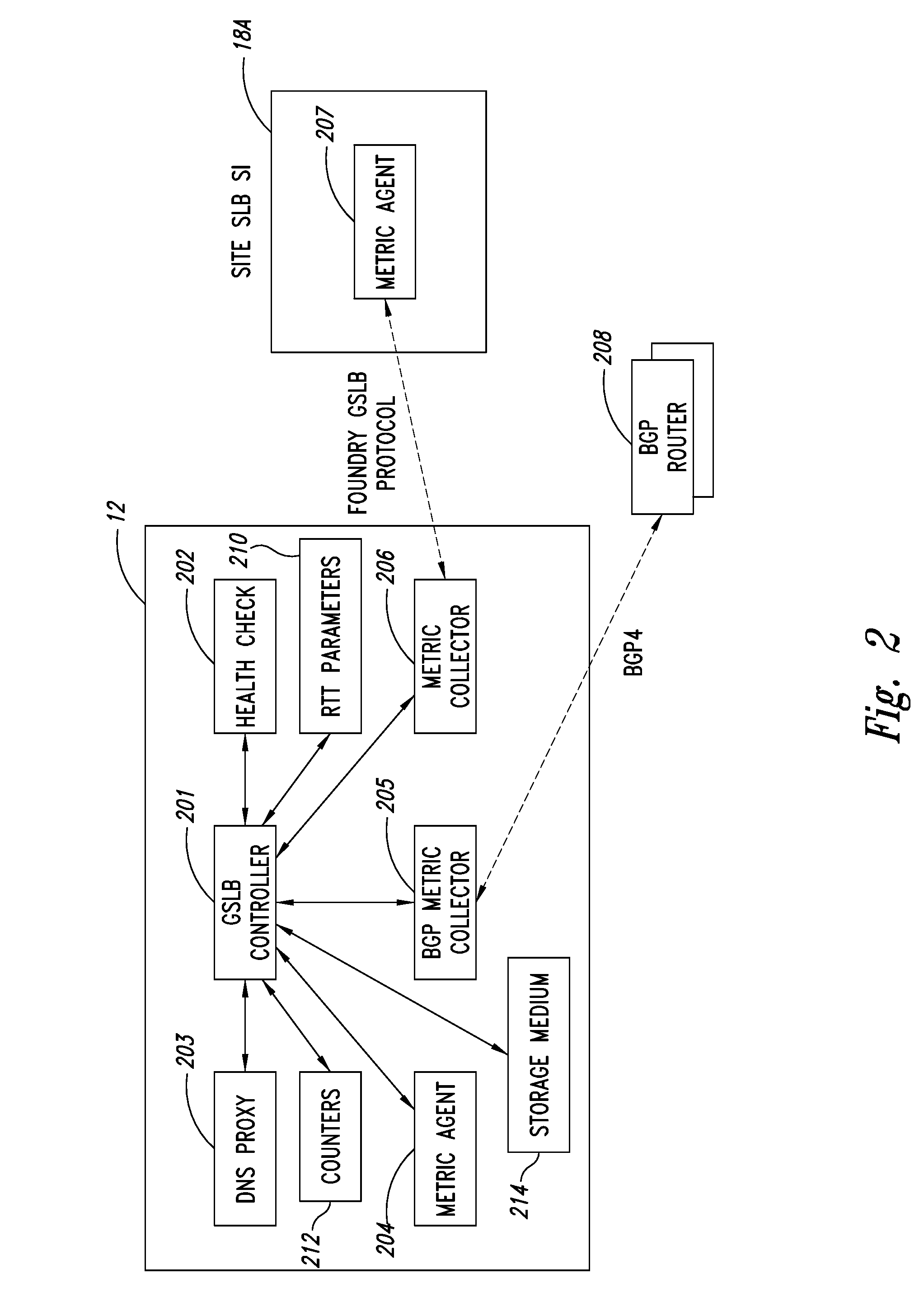Smoothing algorithm for round trip time (RTT) measurements
a smoothing algorithm and round trip time technology, applied in data switching networks, frequency-division multiplexes, instruments, etc., can solve the problems of not being able to adapt quickly to large variances in rtt values or changes in rtt measurements, and not providing flexibility to customize rtt smoothing based on r
- Summary
- Abstract
- Description
- Claims
- Application Information
AI Technical Summary
Benefits of technology
Problems solved by technology
Method used
Image
Examples
case 1 (
[0059]Case 1 (block 310):
[0060]If [(deltaRTT>0) and (|deltaRTT|>max-delta-allowed)], then RTTnew is much larger than the current RTT value;
case 2 (
[0061]Case 2 (block 312):
[0062]If [(deltaRTTmax-delta-allowed)], then RTTnew is much smaller than the current RTT value; and
case 3 (
[0063]Case 3 (block 314): If Case 1 and Case 2 are false, then RTTnew value is in the acceptable range. Note that |deltaRTT| refers to the absolute value of deltaRTT (e.g., |−3| is 3 and |4| is 4).
[0064]An example illustrates application of these concepts:
[0065]Let y=200% as set by the user
[0066]Let RTTold=300 us
[0067]Let RTTnew=100 ms
[0068]Using the above method, the new RTT sample is determined to be much larger than the existing RTT value:
deltaRTT=RTTnew−RTTold=100 ms−300 us=99.7 ms
max-delta-allowed=(RTTold*y) / 100=(300*200) / 100=600 us=0.6 ms
[0069]Since (deltaRTT>0) and (|deltaRTT|>max-delta-allowed), the value of the new RTT sample is considered to be much larger than the existing RTT value in this example.
[0070]Based on the determination of whether Case 1, 2, or 3 is present, the flowchart 300 proceeds to a block 316, where RTT smoothing techniques specific to each particular Case 1-3 is performed by the GSLB switch 12. The application of these smoothing techniques / algorithms is...
PUM
 Login to View More
Login to View More Abstract
Description
Claims
Application Information
 Login to View More
Login to View More - R&D
- Intellectual Property
- Life Sciences
- Materials
- Tech Scout
- Unparalleled Data Quality
- Higher Quality Content
- 60% Fewer Hallucinations
Browse by: Latest US Patents, China's latest patents, Technical Efficacy Thesaurus, Application Domain, Technology Topic, Popular Technical Reports.
© 2025 PatSnap. All rights reserved.Legal|Privacy policy|Modern Slavery Act Transparency Statement|Sitemap|About US| Contact US: help@patsnap.com



